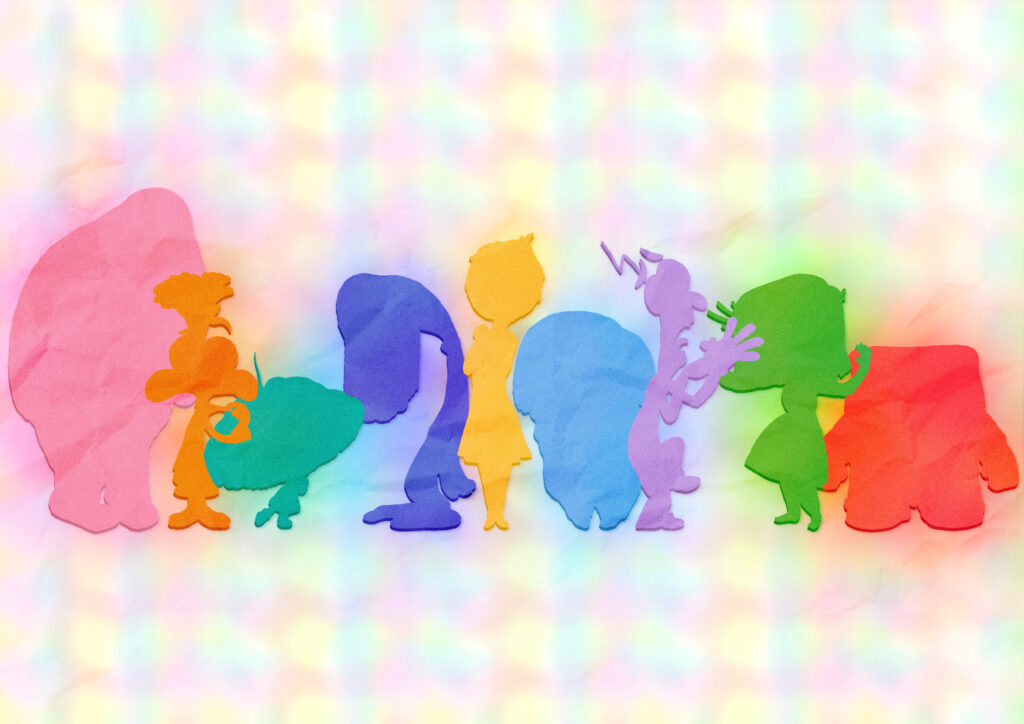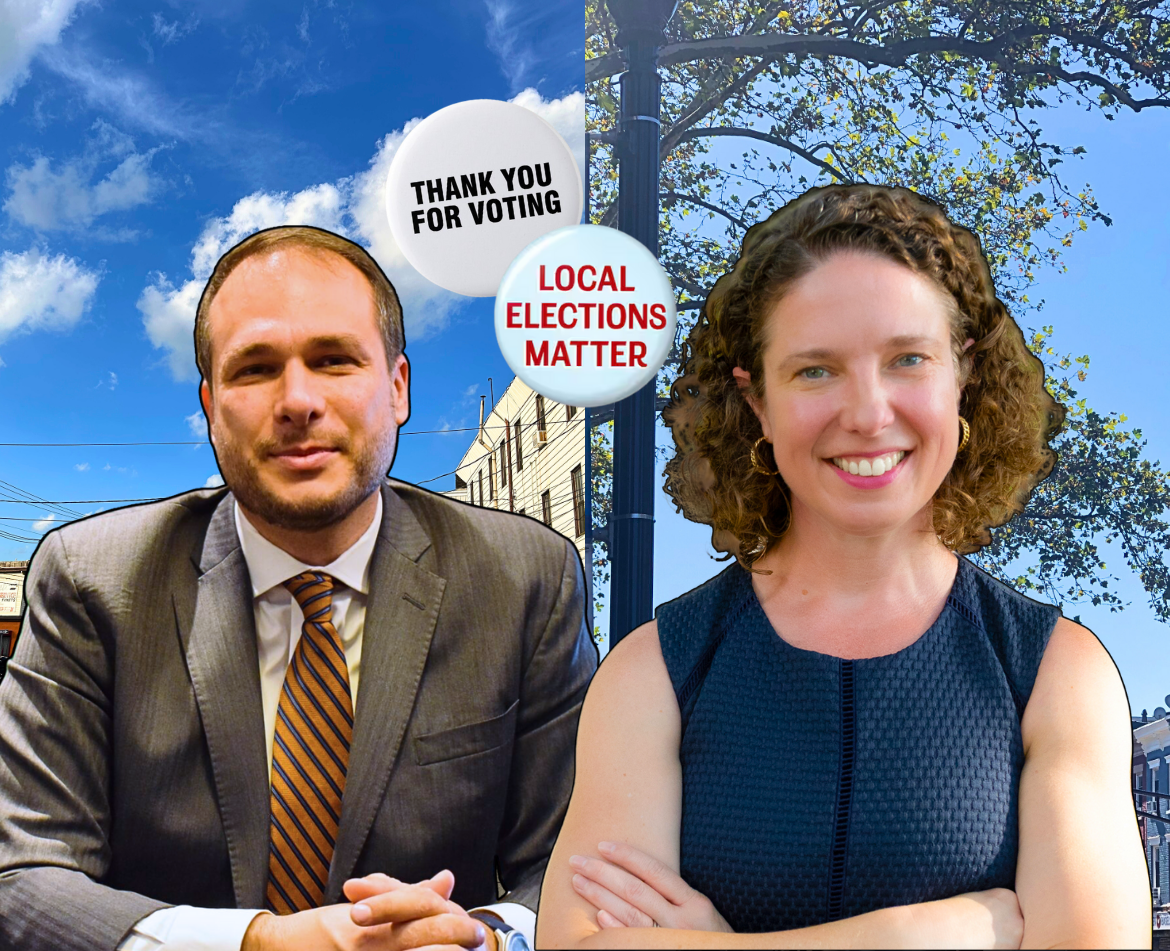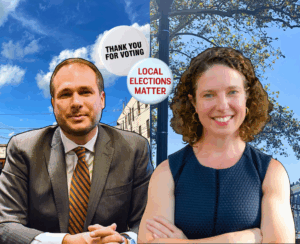Illustration by Sakura Siegel / SOC Images.
This article contains some spoilers for “Inside Out” and “Inside Out 2.”
It’s not always easy to show emotion.
No matter your gender or age, there always seemed to be a stigma around acknowledging mental health. But that was until “Inside Out” released in June 2015 by Disney and Pixar, showing the rollercoaster of growing up. This movie arguably jumpstarted a new look on mental health awareness through its characters, storytelling and, of course, emotions, becoming a film relatable enough for kids, but also adults.
The success of “Inside Out” led to the sequel of “Inside Out 2,” which released almost a decade after in June of this year. It is currently the highest-grossing film of all-time globally with $1.46 billion, surpassing “Frozen II.” New Jersey Stage writer Dw Dunphy held the first film to high acclaim and said adults should see it as much as kids—if not more.
“‘Inside Out’ is a movie that should be seen, not described in a synopsis that couldn’t do it justice. And it is a movie that should be seen by adults,” Dunphy wrote in his 2015 review.
“… There’s definitely something for the young ones, but they haven’t lived long enough to get what is actually going on in the story, which will be most emotionally significant with pre-teens and particularly impactful for adults.”
According to statistics from marketing data analytics firm Movio, “Inside Out 2” saw a demographic shift among 24-44 year olds and 25-34 years olds, climbing from 17% and 14% to 21% and 17%, respectively. While a moderate change in numbers, it still proves that adults are going to see this kids’ movie.
“Inside Out” tells the story of Riley, an 11-year-old girl who moves from Minnesota to San Francisco, with her parents because of her dad’s job. Inside Riley’s mind we see that she has the emotions of Joy, Sadness, Fear, Disgust and Anger.
Each of these emotions works with one another, with Joy being the defacto leader. Whenever one of the emotions uses the console, you see Riley reacting, based on the emotion. You also see her parents have the same emotions, but they have more control over their emotions, as compared to 11-year-old Riley. Riley is unhappy to move away from Minnesota, but she tries to be as positive as possible.
Sadness starts to uncontrollably start wanting to touch the console, causing Riley to unexpectedly show more sadness than usual. This includes Riley crying as she introduces herself to her new school and classmates. As Joy and Sadness leave to try and find a way to be her normal self, this leaves Fear, Anger and Disgust as the only emotions Riley can experience. This results in Riley lashing out to her parents and friends more than usual. Joy and Sadness recall a core memory, that was very happy, but was as a result of Riley being sad initially. Joy then realizes that all emotions are important, even Sadness.
“‘Inside Out’ stands in opposition to an entire culture that tells people that happiness is the highest, best and sometimes only permissible emotion, and that sadness is an obstacle to being happy, and that we should concentrate all of our emotional and cultural energy on trying to eradicate sadness so that everyone can be happy,” Matt Zoller Seitz, a TV critic for New York Magazine and Vulture, wrote in 2015 on RogerEbert.com.
“… Sadness is normal. Sadness is important.
Sadness is not the opposite of Joy, she’s her partner.”
“Inside Out 2” shows the return of the five previous emotions, as a now 13-year-old Riley develops new emotions in Anxiety, Envy, Embarrassment and Ennui, or Boredom.
Riley heads to a hockey camp with her two best friends, while she learns that they will be attending different high schools. While heading to the camp Riley bumps into Val Ortiz, who Riley idolizes and wants to be as good as her in hockey.
Anxiety takes the lead, deciding to try and impress Val and her teammates rather than choosing to be with friends Bree and Grace. Anxiety, wanting to set up the perfect life for Riley has Joy, Sadness, Anger, Fear and Disgust suppressed, leaving Anxiety to have full control of Riley.
inside out 2 really does a great job at showing how toxic positivity can be as damaging as anxiety. pushing all ur negative emotions to the side doesnt make them go away it just makes them pop up when u least want them to!!!
— itzy binks 🩷🇲🇽 (@itzybitzyminnie) June 17, 2024
The climax of the movie sees Anxiety in full control. Riley’s obsession with scoring goals leads her to colliding into Grace. This results in Riley having a panic attack, as well as Anxiety spiraling out of control.
Both “Inside Out” and “Inside Out 2” show the importance of one’s emotions by marking it as a key to communication as well as shaping a person’s interactions, cultural and everyday experiences.
“Emotional Labor is about managing feelings and behaviors to show certain emotions publicly, often to fit in or be accepted. Feeling Rules are social guidelines that tell us how and when to feel certain emotions, varying across different contexts. In the film, Riley adjusts her emotions to get positive reactions from others, and she follows social-feeling rules, which increases her anxiety,” Desmond Hill Jr. wrote on Greater Good Magazine, which is part of the UC Berkeley Research Institute.
“… Emotional labor is like a weight people carry, and they need social, emotional, and physical effort to manage it. Riley’s struggles with moving into different spheres and fitting into them show how these pressures build up over time, affecting her deeply. In this way, ‘Inside Out 2’ highlights that adolescence is a critical time when mental health issues often become more noticeable and intense.”
While targeted towards kids, there are some scenes in both movies that feel very far from a kids’ movie.
In Inside Out (2015), Riley’s clothes become more muted the more depressed she gets. pic.twitter.com/8joaVj8LU6
— Hidden Movie Details (@moviedetail) December 20, 2019
In the first “Inside Out,” Riley hates the idea of living in San Francisco so much that she steals money from her mom’s purse to buy a bus ticket to run away from home and go back to Minnesota. Riley eventually returns home to her parents’ to the relief of both her parents. This impulsive decision shows the complexity of how impactful emotions can be.
Social media reactions to Riley having a panic attack have been positive, if not too relatable. Many say that Disney/Pixar perfectly depicted what it is like to suffer a panic attack, if someone has never experienced one beforehand.
As mental health continues to be more socially acceptable, more public figures continue to speak out on the importance of expressing your feelings. Clips on TikTok and Instagram show some notable quotes in the “Inside Out” franchise.
@heyitsrico24 Feel what u feel your feeling are valid#insideout2 #viral #fypシ゚viral #quotes #blowthisup #makemefamous
♬ original sound – Hj vlogs📷
With the monumental success of “Inside Out 2” it is possible that there are even more emotions for Riley to experience as she gets older and it could even be “mixed” emotions as researchers from USC Dornsife have analyzed.
Riley continues to be one of the more reliable characters, as people of all ages get a better understanding of their own emotions.













